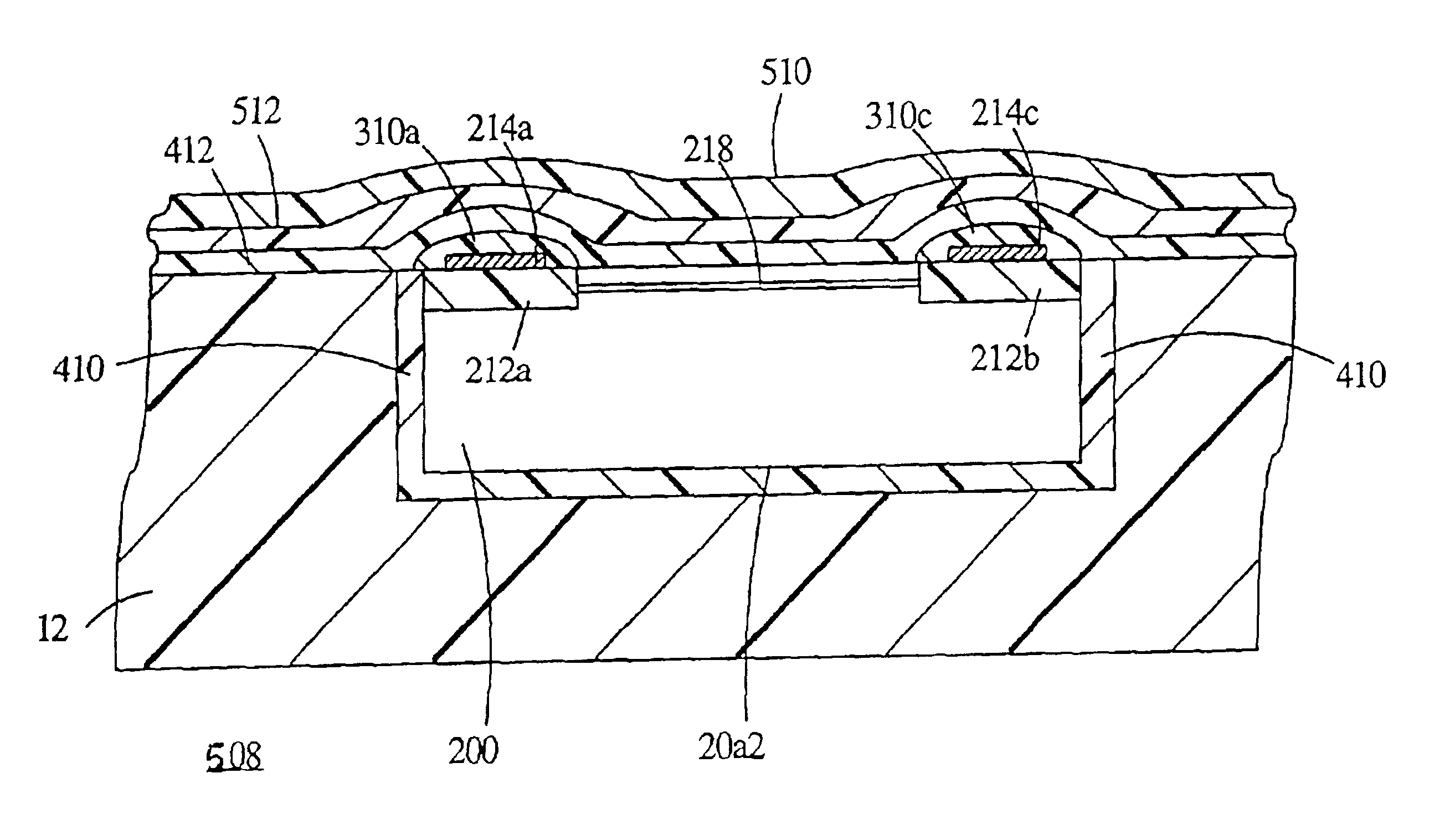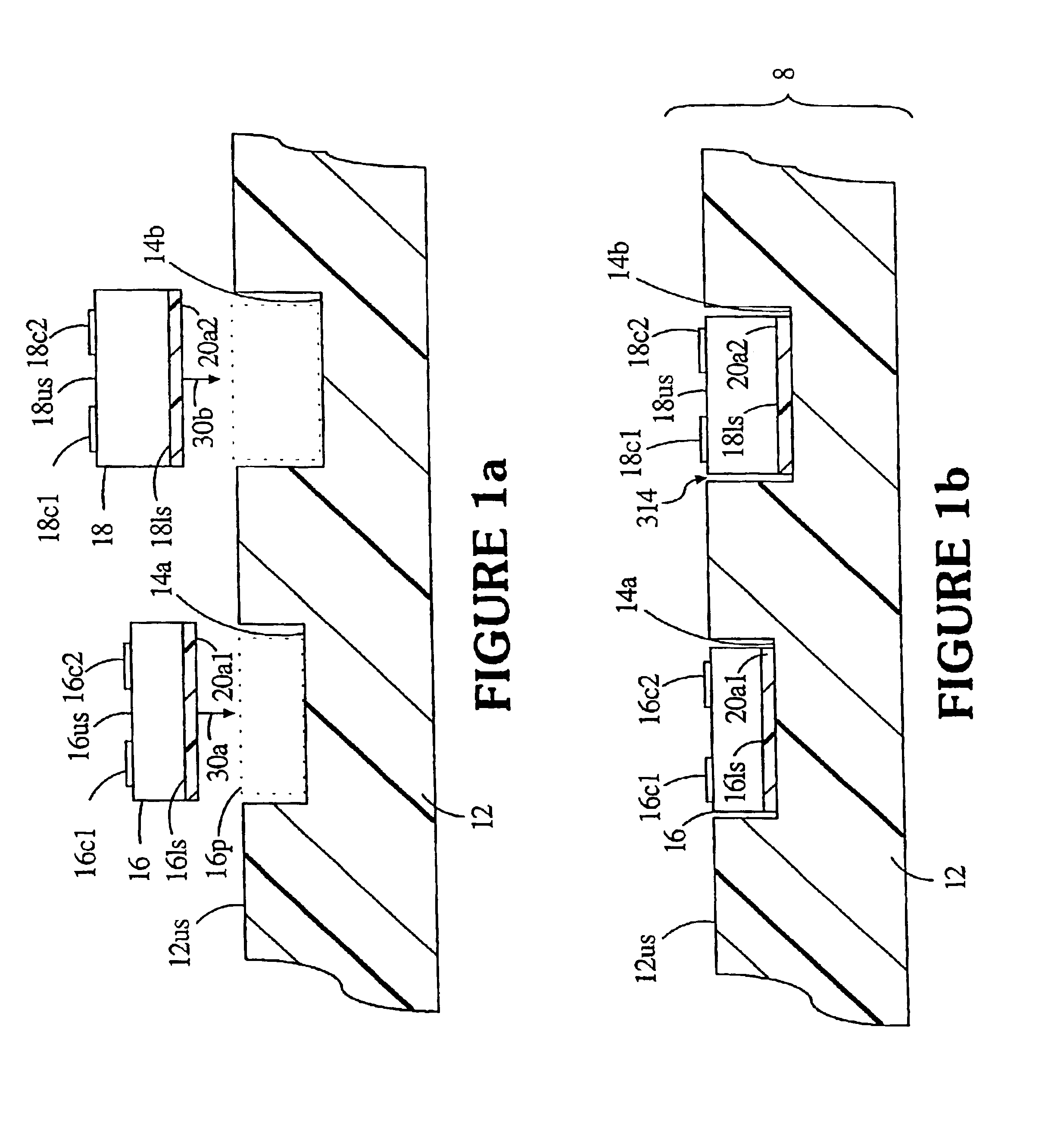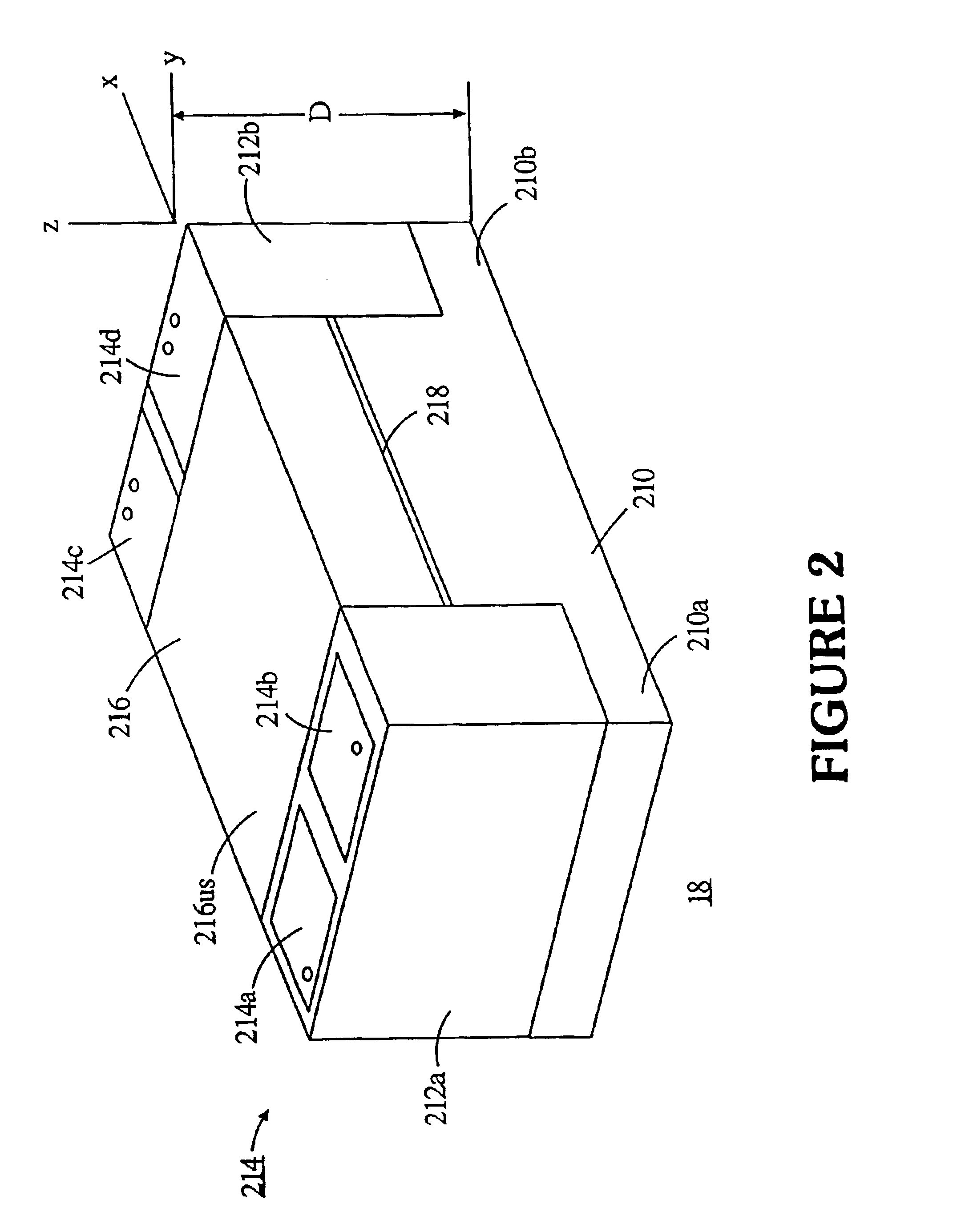Polymide-to-substrate adhesion promotion in HDI
a technology of polymide and substrate, applied in the direction of layered products, basic electric elements, cable/conductor manufacturing, etc., can solve the problems of inability to soften the spie by heating, copper is not the best material for electrical contacts, and adhesion often fails
- Summary
- Abstract
- Description
- Claims
- Application Information
AI Technical Summary
Benefits of technology
Problems solved by technology
Method used
Image
Examples
Embodiment Construction
[0030]In FIG. 1a, a high-density-interconnect (HDI) dielectric substrate 12 defines a planar upper surface 12us, and first and second wells 14a and 14b depressed below surface 12us. Instead of wells, through apertures could be used. As illustrated, a first component 16 defines an upper surface 16us and a lower surface 16ls. Upper surface 16us of component 16 bears a plurality of electrical connections, two of which are illustrated as 16c1 and 16c2. The phantom lines 16p illustrate the location of component 16 when mounted in well 14a. When component 16 is mounted within well 14a, the plane of its upper surface 16us is substantially coincident with the plane of upper surface 12us of dielectric substrate 12. Also in FIG. 1a, a second component 18 defines an upper surface 18us and a lower surface 18ls. Upper surface 18us of component 18 bears a plurality of electrical connections, two of which are illustrated as 18cl and 18c2. The phantom lines 18p illustrate the location of component ...
PUM
| Property | Measurement | Unit |
|---|---|---|
| Temperature | aaaaa | aaaaa |
| Time | aaaaa | aaaaa |
| Thickness | aaaaa | aaaaa |
Abstract
Description
Claims
Application Information
 Login to View More
Login to View More - R&D
- Intellectual Property
- Life Sciences
- Materials
- Tech Scout
- Unparalleled Data Quality
- Higher Quality Content
- 60% Fewer Hallucinations
Browse by: Latest US Patents, China's latest patents, Technical Efficacy Thesaurus, Application Domain, Technology Topic, Popular Technical Reports.
© 2025 PatSnap. All rights reserved.Legal|Privacy policy|Modern Slavery Act Transparency Statement|Sitemap|About US| Contact US: help@patsnap.com



